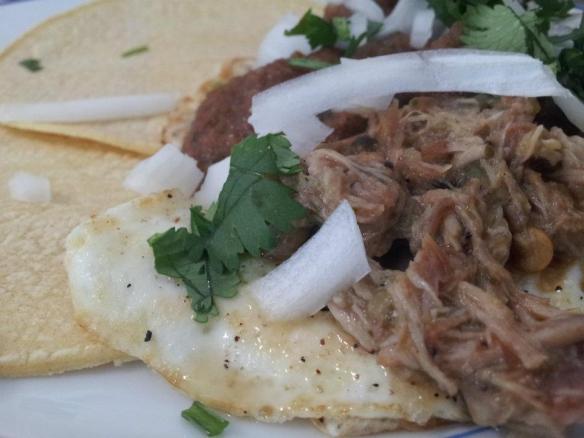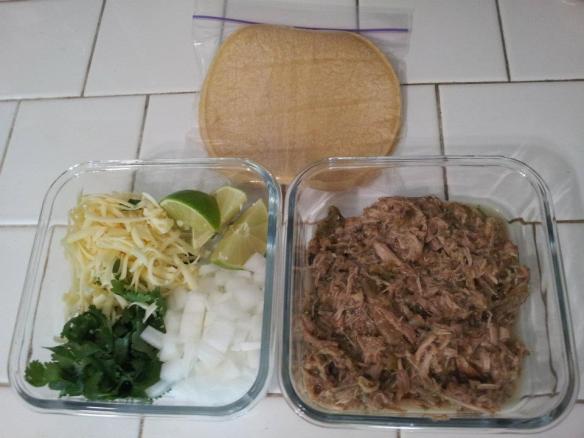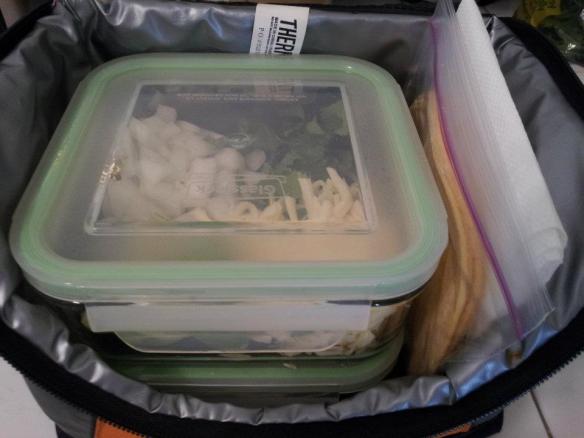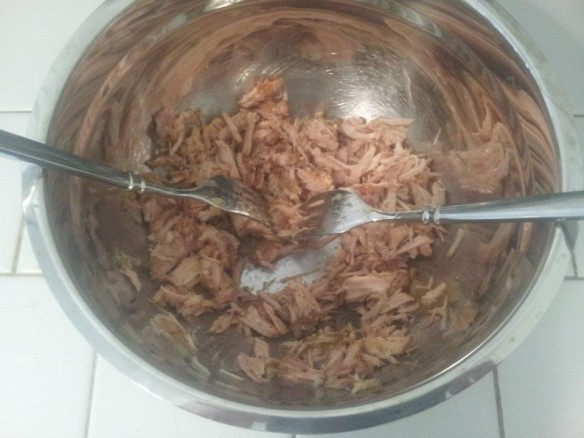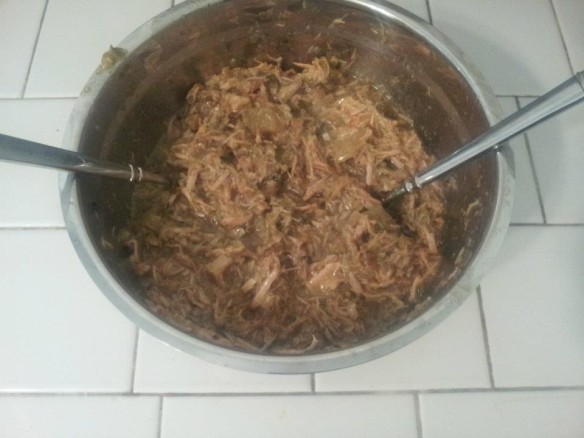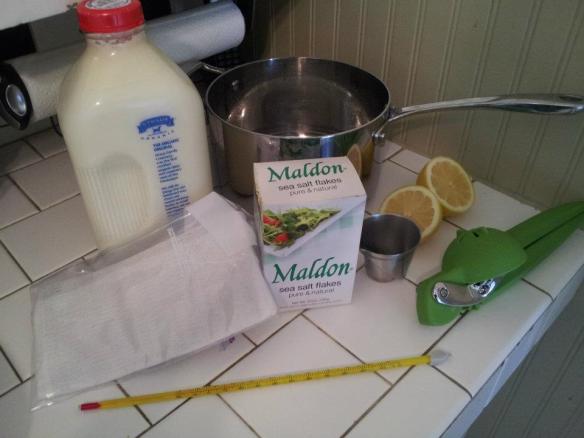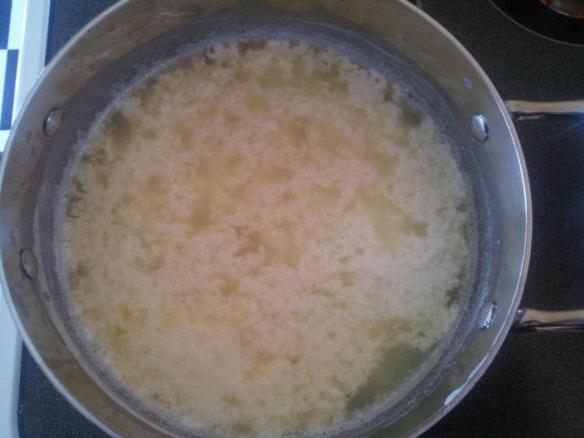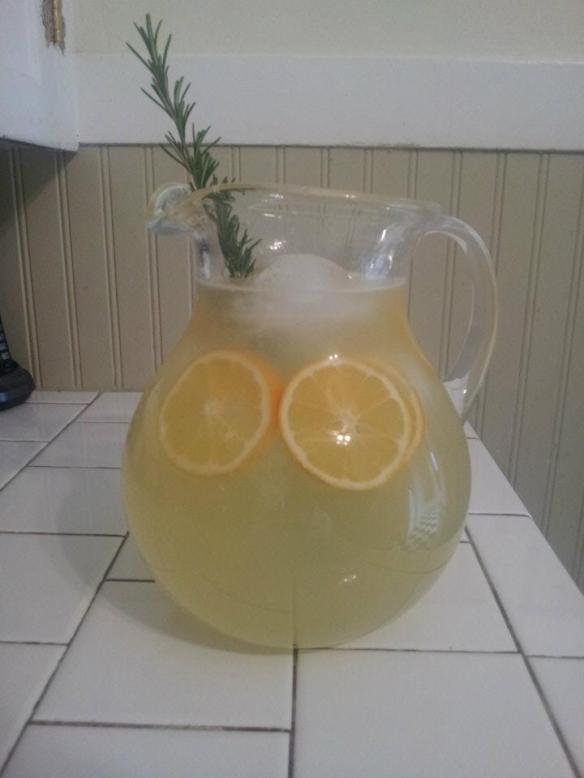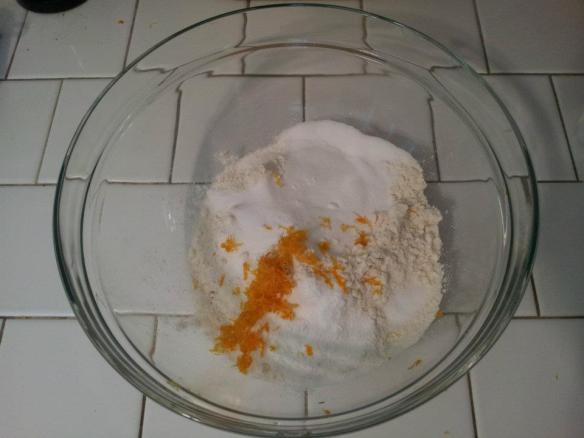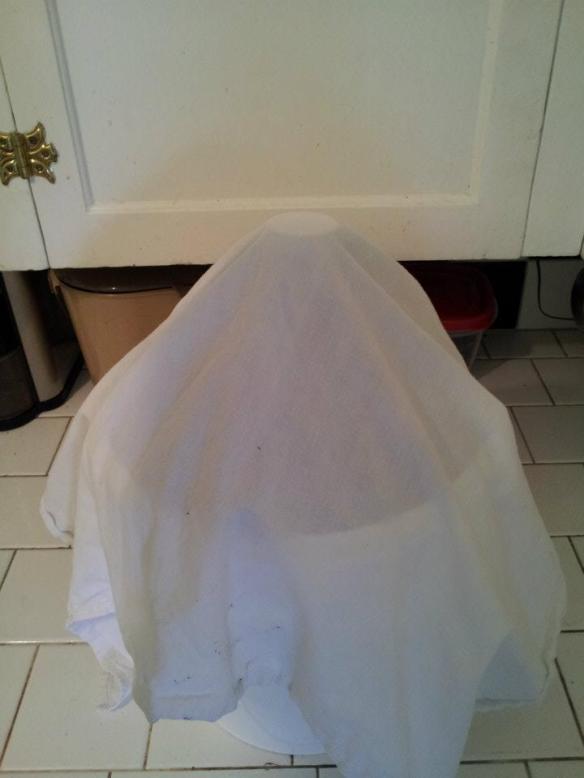I mentioned in my last post that we’ve been using the chile verde I made for all sorts of things. My husband and I often have a lot going on, so sometimes we don’t have time to do a ton of cooking. Because of this, we often make up dishes that we can use throughout the week. I thought I’d do a quick post to show you some options for chile verde (or other taco meat dishes like carnitas or barbaracoa). First up? Breakfast!
Breakfast: Chile Verde Huevos Rancheros
A love of breakfast totally runs in my family. My dad makes awesome breakfasts and my sisters and I are all huge fans of the meal, especially when eggs are involved. One of my favorite egg breakfasts is huevos rancheros. This is basically just fried eggs (usually either sunny side up or over easy) put on tortillas and topped with salsa. It is often served with a side of beans. One reason this dish is so awesome is that you can dress it up or down using basically whatever you have on hand. This morning i didn’t have beans, but I did have chile verde and some homemade tomato salsa.
Om nom nom. Delicious! Plus, this dish is super easy to make. You literally just throw it together and eat it. I topped my overeasy eggs with some chile verde, salsa, onion and cilantro, and devoured it with a couple of corn tortillas. It took all of 5 minutes to make, making this a perfect weekday breakfast. Add a side of black beans and a bloody mary, and you are in prime brunch territory.
Lunch: Taco Time!
The difficult thing about street style tacos is that they pretty much have to be eaten right when they are made. Otherwise the tortilla gets soggy and the onion just overpowers everything. The solution? Pack everything separately!
The toppings I like to use are chopped white onion, chopped cilantro, shredded jack cheese, and some fresh lime wedges. Other options could be chopped fresh jalapenos, pico de gallo, etc. We have glass containers with plastic lids that we use for lunches, but as long as you can microwave the container containing the pork (or you don’t mind munching on it cold), you could use whatever you have. Another option that might work better for school kids or those who don’t have access to a microwave at lunch time is to pack the pork in a thermos so it stays hot.
The beauty of this system is that you can do it in a couple of ways. You can make individual tacos and put the toppings on them as you eat them, or you can put the toppings onto the pork and eat it out of the container, using the tortillas more like a side. You could also pack a larger flour tortilla and include some beans and/or rice and voila: burrito time! The modular system is one of my favorite ways to pack lunches because it can be done ahead without things getting mushy.
If you have enough containers and/or room in your fridge, you could even pack several days worth and just fill your lunch box morning of. Easy peasy. Don’t forget to include a napkin and a fork!

